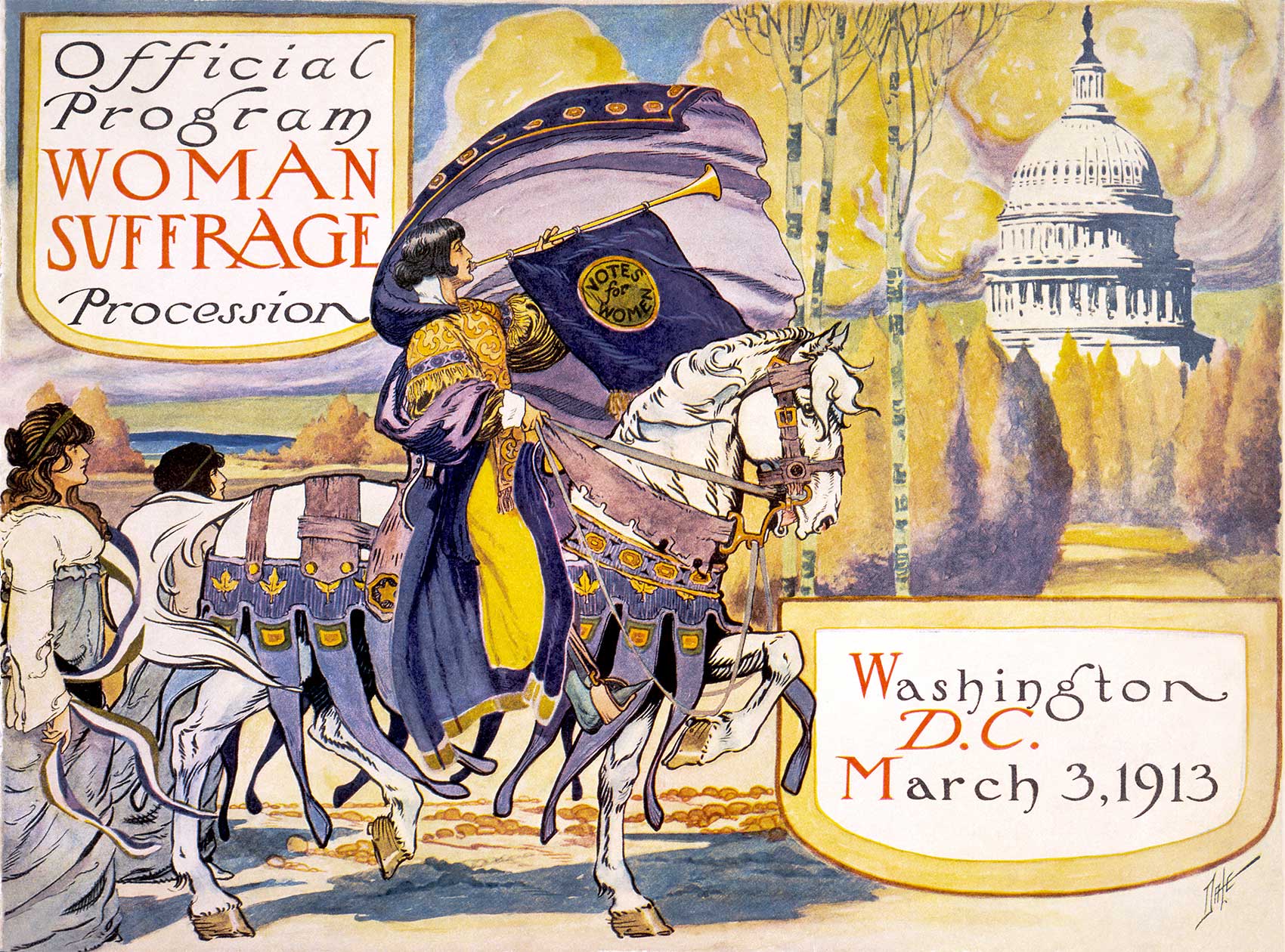The 1913 Suffrage Parade
When Alice Paul took the lead in organizing what she called “a procession of our own” to coincide with President Woodrow Wilson’s March 1913 inauguration, she commissioned an elaborate twenty-page official program. (Paul would soon break with mainstream suffragists to found the militant National Woman’s Party.) The cover image, which was reproduced in full color, was visually striking. The central figure was an elaborately attired woman suggestive of a medieval knight—or perhaps Joan of Arc. As in numerous pieces of suffrage literature, the figure was portrayed as a herald with a bugle, spreading the word with a “Votes for Women” banner. And she was broadcasting this message in a decidedly public space—the streets of the nation’s seat of government, as shown by the visual prominence of the U.S. Capitol.
The official program, printed in advance of the event, anticipated a dignified and orderly procession. In contrast the actual parade was disrupted by an unruly crowd and a totally inadequate police presence. It was also tarnished by a nasty display of racism when suffrage leaders relegated black marchers to a separate section at the end of the parade so as not to offend the sensibilities of white Southerners. Ida Wells-Barnett, the founder of first African American suffrage organization in Chicago, would have none of that, joining the Illinois delegation mid-parade and marching without incident. Her courageous defiance of suffrage leaders who told her (to use a metaphor from the civil rights movement) to move to the back of the bus serves as an iconic emblem of the deeply imbedded racism and prejudice that marred what was supposed to be a movement for democracy and full citizenship.
